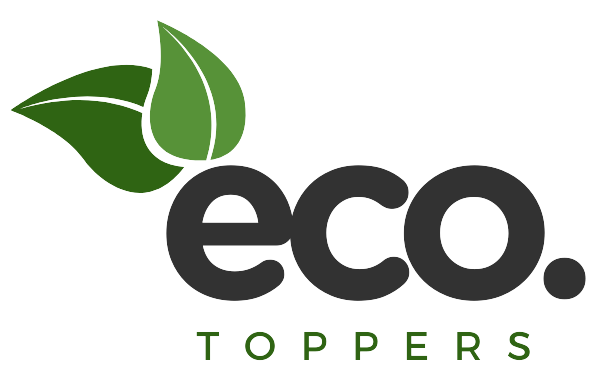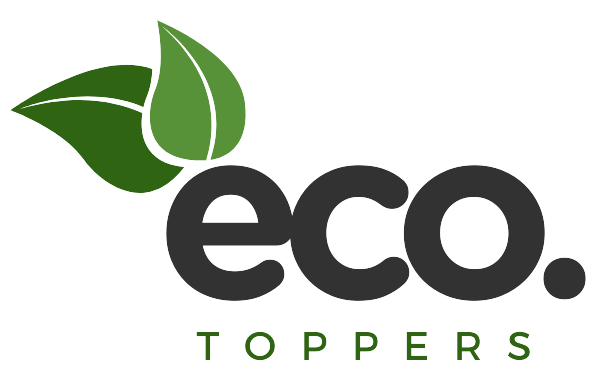Eco-Friendly Bamboo Mattress Toppers: Sustainable Comfort for Conscious Consumers
What is the best eco-friendly bamboo mattress topper in Australia for 2025?
The best eco-friendly bamboo mattress toppers in Australia offer sustainable comfort by using renewable bamboo fibers and natural latex cores. Designed with low-impact processing and biodegradable materials, they reduce environmental harm while providing cooling, hypoallergenic sleep surfaces ideal for conscious consumers.
In an era where environmental consciousness is increasingly shaping consumer choices, the bedroom has become an important frontier for sustainable living. The mattress industry, traditionally associated with synthetic materials, chemical treatments, and significant environmental footprints, is experiencing a green revolution—and bamboo mattress toppers are leading the charge. These innovative sleep products offer a compelling combination of comfort, performance, and eco-friendly credentials that appeal to environmentally conscious consumers without compromising on sleep quality.
Bamboo mattress toppers represent a remarkable intersection of ancient wisdom and modern innovation. Utilizing one of nature's most renewable and versatile resources, these products harness bamboo's exceptional properties to create sleep surfaces that are as kind to the planet as they are to your body. From sustainable harvesting practices to biodegradable materials, bamboo mattress toppers offer a holistic approach to eco-friendly sleep that extends far beyond simple "greenwashing."
In this comprehensive guide, we'll explore the environmental benefits of bamboo mattress toppers, the science behind their sustainability, and how to select the most eco-friendly options for your home. Whether you're an environmental advocate looking to reduce your carbon footprint or simply a conscious consumer seeking healthier, more sustainable products, understanding the ecological advantages of bamboo mattress toppers could transform both your sleep experience and your environmental impact.
The Environmental Impact of Traditional Bedding
Before exploring the eco-friendly benefits of bamboo mattress toppers, it's important to understand the environmental challenges posed by conventional bedding products:
Resource-Intensive Materials
Traditional bedding materials come with significant environmental costs:
Conventional Cotton: While natural, conventional cotton is one of the most resource-intensive crops globally:
• Requires approximately 20,000 liters of water to produce just 1kg of cotton
• Accounts for 16% of global insecticide use despite occupying only 2.5% of agricultural land
• Typically involves heavy pesticide and fertilizer use that can contaminate soil and water systems
Polyester and Synthetic Foams: Petroleum-derived materials common in conventional mattress toppers:
• Produced from non-renewable fossil fuels
• Manufacturing processes release volatile organic compounds (VOCs) and other pollutants
• Can take hundreds of years to decompose in landfills
• Microplastic shedding contributes to global plastic pollution
Traditional Memory Foam: While comfortable, conventional memory foam has significant environmental drawbacks:
• Typically made with petroleum-based polyurethane
• Often contains chemical flame retardants, formaldehyde, and other potentially harmful substances
• Energy-intensive manufacturing process with substantial carbon emissions
• Non-biodegradable, contributing to long-term landfill waste
Chemical Treatments
Many conventional bedding products undergo chemical processing:
Flame Retardants: Required by law in many regions, traditional chemical flame retardants:
• Often contain potentially harmful compounds like polybrominated diphenyl ethers (PBDEs)
• Can bioaccumulate in the environment and wildlife
• May persist in ecosystems for decades
Stain Repellents: Treatments to enhance product performance:
• Often contain perfluorinated compounds (PFCs) that persist in the environment
• Can contaminate water systems and wildlife
• Some have been linked to environmental and health concerns
Antimicrobial Treatments: Chemical approaches to hygiene:
• May include triclosan or silver nanoparticles
• Can leach into water systems during washing
• May contribute to antimicrobial resistance in the environment
Manufacturing and Transportation Footprint
The production and distribution of conventional bedding creates additional environmental impacts:
Energy-Intensive Production: Manufacturing processes for synthetic materials:
• Typically rely on fossil fuels for energy
• Generate significant greenhouse gas emissions
• Often involve multiple chemical processes with associated pollution
Global Supply Chains: The journey from raw material to finished product:
• Often involves materials and manufacturing spread across multiple continents
• Results in substantial transportation emissions
• Creates complex waste streams across different regulatory environments
Packaging Waste: Delivery to consumers generates additional waste:
• Often involves non-recyclable plastic packaging
• Compressed products may use chemical agents to facilitate compression
• Shipping materials frequently end up in landfills
End-of-Life Considerations
What happens when bedding products reach the end of their useful life:
Landfill Persistence: Most conventional mattress toppers:
• Are not biodegradable or compostable
• Can take decades or centuries to break down
• Release microplastics and potentially harmful chemicals as they degrade
Recycling Challenges: Mixed materials create disposal problems:
• Most conventional mattress toppers contain multiple material types that are difficult to separate
• Few recycling facilities are equipped to process bedding products
• Results in most used bedding ending up in landfills despite potential recyclability
Bamboo's Environmental Advantages
Bamboo offers several significant environmental benefits that make it an exceptional material for eco-friendly mattress toppers:
Remarkable Renewability
Bamboo's growth characteristics make it one of the most sustainable plant resources on the planet:
Rapid Growth Rate: Bamboo's growth speed is unmatched among woody plants:
• Some species can grow up to 91 cm (36 inches) in a single day under ideal conditions
• Reaches full maturity in 3-5 years, compared to 30-50 years for most timber trees
• Can be harvested repeatedly from the same plant without killing it or requiring replanting
Self-Regeneration: Bamboo's natural regeneration capabilities:
• Extensive root system remains intact after harvesting, allowing new shoots to emerge
• Eliminates the need for replanting after harvest, reducing soil disturbance
• Creates a truly renewable cycle that can continue for decades from a single planting
High Yield Per Acre: Bamboo's space efficiency:
• Produces up to 10 times more usable material per acre than comparable timber
• Requires less land to meet material needs, reducing pressure on natural habitats
• Can be grown in areas unsuitable for other crops, maximizing land use efficiency
Minimal Resource Requirements
Bamboo thrives with remarkably few inputs compared to other crops:
Water Efficiency: Bamboo's natural water conservation:
• Requires approximately one-third the water of cotton production
• Can thrive on natural rainfall in many regions without irrigation
• Extensive root systems help prevent water runoff and soil erosion
Limited Chemical Inputs: Bamboo's natural resilience:
• Contains a natural bio-agent called "bamboo kun" that provides resistance to pests and pathogens
• Can be grown without pesticides in most circumstances
• Typically requires minimal or no fertilizers, especially when grown in native regions
Soil Benefits: Bamboo's positive impact on growing environments:
• Extensive root systems prevent soil erosion and improve soil structure
• Fallen leaves create natural mulch that returns nutrients to the soil
• Can help rehabilitate degraded lands and restore soil health
Carbon Sequestration
Bamboo plays a significant role in combating climate change:
Superior Carbon Dioxide Absorption: Bamboo's photosynthetic efficiency:
• Absorbs up to 12 tonnes of carbon dioxide per hectare per year
• Produces approximately 35% more oxygen than equivalent stands of trees
• Continues this high rate of carbon sequestration throughout its growth cycle
Carbon Storage: Bamboo's role as a carbon sink:
• Stores carbon in its biomass throughout its life cycle
• When harvested and used in durable products like mattress toppers, this carbon remains sequestered
• Creates a continuous cycle of carbon capture as new shoots replace harvested culms
Reduced Carbon Footprint: The overall climate impact:
• Lower energy requirements for cultivation compared to many crops
• Minimal agricultural inputs translate to fewer emissions from fertilizer and pesticide production
• Local cultivation can reduce transportation emissions in the supply chain
Biodegradability and End-of-Life Benefits
Bamboo-derived products offer advantages at the end of their useful life:
Natural Decomposition: Bamboo's return to nature:
• Bamboo fibers are naturally biodegradable, breaking down without leaving persistent waste
• Decomposition typically occurs within 1-5 years in proper conditions, compared to centuries for many synthetics
• Returns nutrients to the soil as it breaks down
Compostability: Bamboo's contribution to circular systems:
• Pure bamboo fabrics can be composted in industrial facilities
• Some bamboo components may be suitable for home composting
• Creates potential for closed-loop systems where materials return to the earth
Reduced Landfill Impact: Environmental benefits at disposal:
• Does not release microplastics as it breaks down
• Decomposes more quickly than synthetic alternatives, reducing landfill volume
• Typically doesn't leach harmful chemicals during decomposition
Bamboo Processing: Understanding the Environmental Considerations
While bamboo itself is highly sustainable, the processing methods used to transform it into fabric vary in their environmental impact:
Bamboo Fabric Production Methods
Different approaches to creating bamboo textiles have varying ecological footprints:
Mechanical Processing (Bamboo Linen):
• Most eco-friendly approach that crushes bamboo and uses natural enzymes to break it down into fibers
• Requires minimal chemicals and creates a textile similar to traditional linen
• Results in a somewhat coarser fabric that's less common in mattress toppers
• Lowest environmental impact but higher production costs
Lyocell Process (Closed-Loop System):
• Uses non-toxic solvent N-Methylmorpholine N-oxide (NMMO) in a closed-loop system
• Approximately 99.5% of chemicals are captured and recycled in the manufacturing process
• Creates minimal waste and uses significantly less water than conventional viscose
• Results in soft, durable fabric with excellent moisture management
• Moderate environmental impact with strong sustainability credentials
Viscose/Rayon Process (Chemical):
• Most common method, using sodium hydroxide and carbon disulfide to dissolve bamboo pulp
• Creates very soft, silky fabric but involves more intensive chemical processing
• Traditional methods can release chemicals into wastewater if not properly managed
• Higher environmental impact, though still biodegradable end product
• Improved processes with better chemical management are increasingly common
Certifications for Eco-Friendly Processing
Look for these certifications to ensure environmentally responsible production:
OEKO-TEX Standard 100:
• Certifies that textiles have been tested for harmful substances
• Ensures the final product is safe for human use
• Does not specifically address all environmental aspects of production
Forest Stewardship Council (FSC):
• Certifies that bamboo is harvested from responsibly managed forests
• Ensures protection of biodiversity and local communities
• Addresses the sourcing phase of production
Global Organic Textile Standard (GOTS):
• Comprehensive standard covering organic status of fibers and environmental processing
• Restricts use of hazardous chemicals and addresses wastewater treatment
• Includes social criteria for fair labor practices
MADE IN GREEN by OEKO-TEX:
• Certifies products made in environmentally friendly facilities with safe working conditions
• Traceable product label that shows the supply chain
• Combines environmental and social responsibility
Evaluating Environmental Claims
How to assess the true eco-friendliness of bamboo mattress toppers:
Transparency in Processing:
• Look for brands that clearly disclose their bamboo processing methods
• Prefer products that specify "lyocell process" or "mechanical processing" over generic "bamboo viscose"
• Check for details about chemical management and water treatment in production
Holistic Assessment:
• Consider the entire lifecycle from bamboo sourcing to end-of-life disposal
• Evaluate packaging materials and shipping practices
• Look for companies with comprehensive sustainability commitments beyond just materials
Avoiding Greenwashing:
• Be wary of vague environmental claims without specific details or certifications
• Look beyond marketing terms like "eco-friendly" or "green" for substantive information
• Research company sustainability reports and third-party evaluations
Choosing the Most Eco-Friendly Bamboo Mattress Topper
Not all bamboo mattress toppers are created equal when it comes to environmental impact. Here's how to select the most sustainable option:
Bamboo Fabric Considerations
The type of bamboo fabric significantly impacts overall sustainability:
Optimal Choices:
• Bamboo lyocell (TENCEL™ or similar closed-loop processes)
• Mechanically processed bamboo linen (though less common in mattress toppers)
• Bamboo viscose from manufacturers with verified sustainable processing
Fabric Certifications:
• OEKO-TEX Standard 100 (ensures fabric is free from harmful substances)
• GOTS certification (if combined with organic materials)
• Cradle to Cradle certification (evaluates material health and recyclability)
Bamboo Content Percentage:
• Higher bamboo content generally provides better environmental benefits
• Look for at least 70% bamboo content for maximum sustainability advantages
• Consider what other materials are blended with bamboo (organic cotton is preferable to synthetics)
Core Material Selection
The internal material of your bamboo mattress topper significantly impacts its overall environmental footprint:
Natural Latex:
• Most eco-friendly core option, especially if certified organic
• Biodegradable, renewable resource derived from rubber tree sap
• Extremely durable, potentially lasting 10+ years
• Look for GOLS (Global Organic Latex Standard) certification
• Dunlop process typically has lower environmental impact than Talalay
Plant-Based Memory Foam:
• Replaces portion of petroleum-based ingredients with plant oils (soy, castor, corn)
• Reduces fossil fuel dependency compared to traditional memory foam
• Still contains synthetic components but with improved environmental profile
• Look for CertiPUR-US certification to ensure low VOCs and no harmful chemicals
• Check percentage of plant-based content (higher is better)
Wool:
• Natural, renewable resource with excellent biodegradability
• Provides natural fire resistance without chemical treatments
• Look for organic certification and humane animal treatment
• Consider carbon footprint of wool production and transportation
Kapok Fiber:
• Sustainable plant fiber from the ceiba tree
• Naturally buoyant, hypoallergenic, and biodegradable
• Requires minimal processing and chemical inputs
• Renewable resource that supports rainforest economies
Manufacturing and Company Practices
The production process and corporate values significantly impact overall sustainability:
Energy Sources:
• Prefer companies using renewable energy in manufacturing
• Look for carbon offset programs or carbon-neutral production
• Check for energy efficiency certifications or commitments
Water Management:
• Responsible water usage and treatment in production
• Closed-loop water systems that recycle processing water
• Wastewater treatment that exceeds regulatory requirements
Waste Reduction:
• Zero-waste or low-waste manufacturing processes
• Upcycling or repurposing of production scraps
• Take-back programs for end-of-life product recycling
Packaging and Shipping
Often overlooked aspects that contribute significantly to environmental impact:
Sustainable Packaging:
• Minimal packaging that uses recycled and/or recyclable materials
• Plastic-free packaging options (paper, cardboard, cornstarch-based materials)
• Absence of unnecessary packaging elements
Shipping Efficiency:
• Compressed shipping to reduce carbon footprint of transportation
• Carbon-neutral shipping options
• Local or regional manufacturing to reduce shipping distances
Chemical Considerations:
• Avoidance of chemical compression agents in packaging
• No flame retardant chemicals (look for natural fire barriers instead)
• Low-VOC or zero-VOC materials and adhesives
Beyond Materials: The Broader Environmental Impact
A truly eco-friendly bamboo mattress topper considers impacts beyond just materials:
Durability and Longevity
One of the most important sustainability factors is how long a product lasts:
Quality Construction:
• Higher-density foams and quality materials typically last longer
• Reinforced stitching and durable covers extend useful life
• Removable, washable covers prevent premature replacement due to stains or damage
Warranty Considerations:
• Longer warranties often indicate manufacturer confidence in durability
• Look for at least 3-5 year warranties for quality assurance
• Check warranty terms for comprehensiveness and exclusions
Environmental Mathematics:
• A topper that lasts twice as long essentially halves its environmental impact
• Higher initial cost for quality often translates to better environmental value
• Consider cost-per-year of expected use rather than just purchase price
Social Responsibility
Environmental sustainability is closely linked with social sustainability:
Fair Labor Practices:
• Fair wages and safe working conditions throughout the supply chain
• Certifications like Fair Trade or SA8000 that verify ethical labor practices
• Transparency about manufacturing locations and labor standards
Community Impact:
• Sustainable harvesting that benefits local communities
• Support for bamboo farmers and traditional cultivation practices
• Reinvestment in communities where materials are sourced
Corporate Responsibility:
• B Corp certification or similar verification of balanced profit and purpose
• Published sustainability reports with measurable goals and progress
• Environmental initiatives beyond product manufacturing
End-of-Life Planning
How a product is disposed of significantly impacts its overall environmental footprint:
Biodegradability:
• Pure bamboo fabrics will biodegrade naturally
• Natural latex cores are biodegradable (though breakdown time varies)
• Even plant-based foams typically contain synthetic elements that won't fully biodegrade
Recyclability:
• Look for designs that allow separation of different materials for recycling
• Check if manufacturer offers take-back programs for proper recycling
• Consider local recycling options for mattress materials
Repurposing Potential:
• Quality toppers can often be repurposed for guest beds, camping, or pet bedding
• Some materials can be repurposed for garden use or crafts
• Consider creative reuse options before disposal
Maintaining Your Eco-Friendly Bamboo Mattress Topper
Proper care extends the life of your topper and preserves its environmental benefits:
Sustainable Cleaning Practices
Environmentally friendly approaches to keeping your topper clean:
Eco-Friendly Detergents:
• Use plant-based, biodegradable detergents free from phosphates and optical brighteners
• Avoid fabric softeners, which can coat fibers and reduce bamboo's natural properties
• Consider soap nuts or other natural cleaning alternatives
Energy-Efficient Washing:
• Wash removable covers in cold water to reduce energy consumption
• Air dry when possible instead of using a dryer
• If machine drying is necessary, use low heat settings
Spot Cleaning:
• Address spills and stains immediately with natural cleaners
• Use diluted white vinegar or baking soda solutions for natural disinfecting
• Avoid harsh chemical cleaners that can damage fibers and leave residues
Extending Lifespan
Practices that maximize the durability of your bamboo mattress topper:
Rotation Schedule:
• Rotate your topper 180 degrees every 3-4 months
• This prevents body impressions and ensures even wear
• Mark your calendar or set phone reminders for regular rotation
Protective Covering:
• Use a washable, waterproof mattress protector made from sustainable materials
• Ensure the protector is breathable to maintain bamboo's benefits
• Look for GOTS-certified organic cotton or bamboo-derived protectors
Proper Support:
• Ensure your mattress provides adequate, even support for the topper
• Address any mattress sagging issues before adding a topper
• Consider the compatibility of your bed frame with your mattress and topper
Seasonal Considerations
Adapting care based on environmental conditions:
Humidity Management:
• In humid climates, ensure adequate airflow around your bed
• Consider periodic airing of your topper on dry, sunny days
• Use dehumidifiers in extremely humid environments to prevent mold
Temperature Variations:
• Bamboo naturally adapts to temperature changes, but extreme conditions may affect performance
• In very cold environments, allow memory foam toppers time to fully expand
• In hot climates, leverage bamboo's natural cooling properties by using breathable sheets
Real User Experiences: Environmental Impact and Performance
Many environmentally conscious consumers report satisfaction with their bamboo mattress toppers:
Success Stories
"As someone deeply committed to reducing my environmental footprint, finding bedding that aligned with my values was challenging. My bamboo and natural latex mattress topper has been the perfect solution—incredibly comfortable while giving me peace of mind about its ecological impact. After two years, it still looks and performs like new." - Emma L., 29
"I was skeptical about 'green' bedding products, having been disappointed by performance issues in the past. My bamboo mattress topper has completely changed my perspective. It sleeps cooler than any synthetic topper I've tried, and knowing it's made from renewable materials makes the comfort even sweeter." - Michael T., 42
"The combination of environmental benefits and allergy relief made a bamboo mattress topper the perfect choice for our family. We've noticed improved sleep quality, fewer allergy symptoms, and love knowing we're making a more sustainable choice. We've since replaced all our bedding with bamboo products." - Sarah and David R., 35
Balancing Expectations
Realistic perspectives on eco-friendly sleep products:
• Most users acknowledge that truly sustainable products may come with higher initial costs but offer better long-term value
• Some note that the most eco-friendly options (like mechanical bamboo processing) may offer slightly different comfort characteristics than conventional alternatives
• Many emphasize the importance of researching beyond marketing claims to find genuinely sustainable options
• Most agree that the combination of comfort and environmental benefits makes bamboo mattress toppers worth the investment
Conclusion: Sleeping Sustainably Without Compromise
Eco-friendly bamboo mattress toppers represent a compelling solution for environmentally conscious consumers seeking to reduce their ecological footprint without sacrificing comfort or quality. By harnessing bamboo's remarkable natural properties—rapid renewability, minimal resource requirements, carbon sequestration, and biodegradability—these innovative sleep products offer a holistic approach to sustainable bedding that extends from production to disposal.
The ideal eco-friendly bamboo mattress topper will depend on your specific environmental priorities, comfort preferences, and budget. By carefully considering factors like bamboo processing methods, core materials, manufacturing practices, and end-of-life options, you can select a topper that aligns with your personal sustainability values while enhancing your sleep experience.
While no product is perfect from an environmental perspective, bamboo mattress toppers represent a significant improvement over conventional alternatives. When combined with proper care and maintenance to maximize lifespan, these products offer a meaningful way to reduce your bedroom's environmental footprint without compromising on comfort or performance.
As consumer demand for sustainable options continues to grow, we can expect ongoing innovations in eco-friendly sleep products. By supporting companies committed to environmental responsibility and making informed choices about the products we bring into our homes, we contribute to a broader shift toward sustainability in the bedding industry—proving that green choices and great sleep can indeed go hand in hand.
FAQs About Eco-Friendly Bamboo Mattress Toppers
Q1: What makes bamboo mattress toppers eco-friendly?
A: They are made from rapidly renewable bamboo, use low-water cultivation, and are often processed using closed-loop or mechanical methods that minimize chemical waste.
Q2: Are bamboo mattress toppers biodegradable in Australia?
A: Yes, bamboo toppers are typically biodegradable, especially when combined with organic latex or natural fibers. Look for OEKO-TEX or GOTS certification.
Q3: Is a bamboo mattress topper good for allergy sufferers?
A: Absolutely. Bamboo is naturally hypoallergenic, antimicrobial, and resistant to dust mites, making it perfect for people with allergies or sensitive skin.
Q4: What certifications should I look for in a sustainable topper?
A: Certifications like OEKO-TEX Standard 100, GOTS, and FSC ensure the product is non-toxic, organic, and responsibly sourced.
Q5: Where can I buy eco-friendly bamboo mattress toppers in Australia?
A: Check sustainable bedding retailers like Ecotoppers for certified bamboo mattress toppers made for Australian standards.
For further information please refer to:
Can You Put a Mattress Protector Over a Topper?
Are Bamboo Mattress Toppers Cooling? Discover the Truth for Australians






